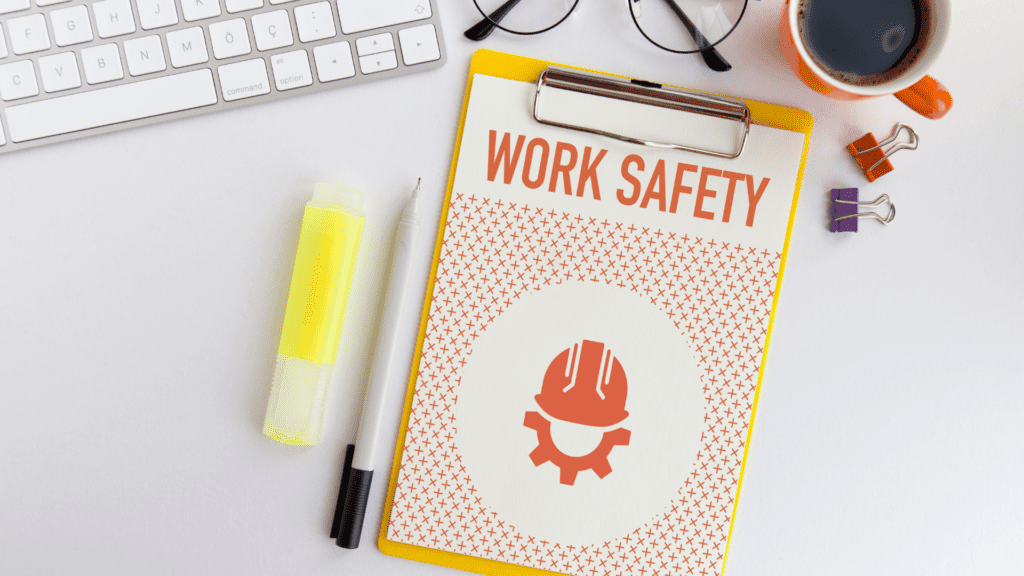Safety should always be a top priority for employers and workers alike. Unfortunately, workplace injuries and fatalities happen far too often, resulting in costly legal and financial ramifications for businesses. With that in mind, it is essential to ensure that your workplace is safe, compliant with safety regulations, and equipped with proper safety protocols. Here are 7 tips to keep employees safe.
1. Establish a Comprehensive Workplace Safety Program
Make sure that your workplace has a comprehensive safety plan in place and that all employees are aware of it. This plan should include protocols for addressing workplace hazards, reporting unsafe conditions, and providing employees with the necessary safety equipment.
Having an appropriate and effective safety plan not only assists in preventing injuries but will also help decrease severity of issues due to quick and efficient response times to incidents.

2. Normalize Frequent Risk Assessments
Conduct regular risk assessments of the workplace to identify potential hazards before they become an issue for workers’ safety or health. The bare minimum most companies do is an annual assessment, but there are strong reasons to increase this frequency.
Having monthly risk assessments are crucial for injury prevention. Due to human factors, risks change daily and need to be reassessed regularly to ensure the effectiveness of safety protocols. These monthly risk assessments can involve everything from finding a blocked fire door to observing and correcting how employees lift heavy objects.
3. Provide personal protective equipment for workers as needed
Personal Protective Equipment (PPE) is an essential part of any workplace safety program. PPE should be supplied to workers as needed and regularly inspected to ensure it is in good condition. The most common types of PPE are gloves, masks, hard hats, protective glasses, and hearing protection. Employers must provide PPE if there is a risk of injury or illness due to their work activities, and they should also ensure that workers are properly trained in the safe use and care of the equipment.
PPE goes beyond being an OSHA requirement, it is one of the most basic and easily utilized ways to decrease worker injury.
If you regularly see workers not using their PPE appropriately or at all then ask them why they aren’t. It is usually due to outdated or uncomfortable safety equipment.
Related Article: Safety Glasses
4. Train Employees in Ergonomics
Ergonomics is the science of designing jobs, tasks, and equipment to fit the physical capabilities of employees. It’s important that employers invest in ergonomic training for their workers to reduce injuries from repetitive tasks, awkward postures and strains.
Employers should also provide adjustable workstations or other methods for reducing strain on the body during work and ensure that employees adjust the equipment to fit their own needs.
Related Article: Ergonomic Assessments
5. Safety is in the Job Description
Employers should make sure that safety is a part of each job description, so all workers understand their role in keeping the workplace safe. This includes making sure everyone knows how to safely use equipment, follows protocols such as lockout/tagout procedures, and reports any issues or potential hazards.
By putting safety in job descriptions everyone is an owner for safety. In a sense, you are creating a set of specific rules for every role in your company to keep your workers safer.
6. Create Onsite Injury Assessment Workflows
Partner with occupational medicine providers, such WorkSafe, to help with injuries when they occur. Immediate response and a consistent protocol for injuries can save valuable time and money.
WorkSafe can provide onsite provider programs, telemedicine, and in office triage visits to prevent immediate care or ER visits. WorkSafe can also provide follow up care services after injury to get your employees back to work faster with physical therapy.
7. Create a Culture of Safety
Creating a comprehensive safety culture involves not just the employer, but all employees in the organization. It should include communication between management and staff about safety-related topics and the importance of reporting any hazards or potential safety issues that could arise.
Employers should also invest in ongoing safety training and coaching to ensure employees are aware of their responsibilities when it comes to workplace safety. This might include weekly, monthly or quarterly meetings to go over any new policies or procedures related to safety, as well as holding team meetings where workers can share best practices and ideas for how to keep the workplace safe.
Encourage workers to spot problems and reward them for taking initiative to report them. This can help create a culture of trust, collaboration and safety that benefits everyone in the organization.
Conclusion
By following these seven steps employers can take proactive measures to ensure their employees’ safety in the workplace. Investing in a comprehensive safety program that includes ergonomic training, PPE, and creating a culture of trust will help keep your workers safe and prevent injuries. Additionally, having an injury response plan in place with occupational medicine providers like WorkSafe can increase efficiency and reduce costs associated with worker injuries. Taking these steps now to ensure the safety of your employees will pay off in the long run.
Contact WorkSafe to find out how we can help your company today!
Working to keep you safe, healthy, and productive,

